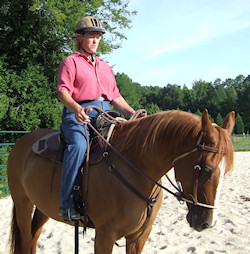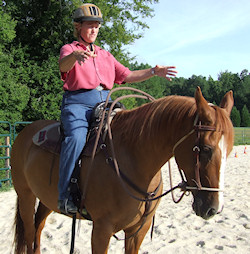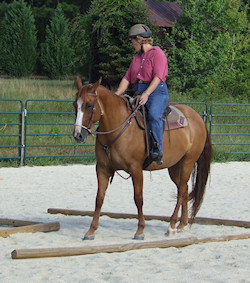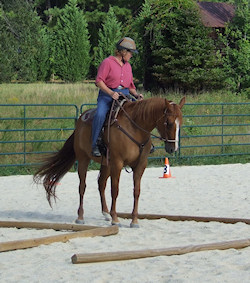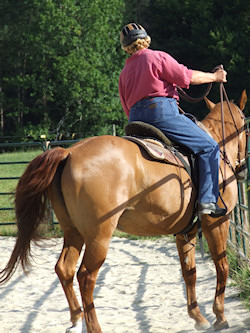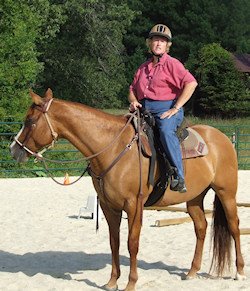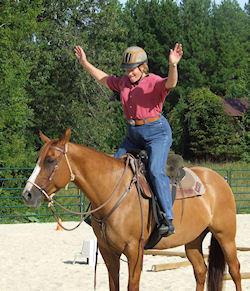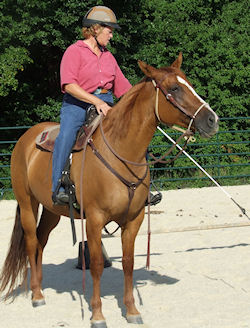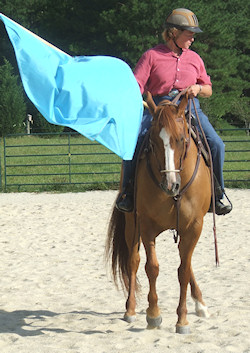Bringing It All Together: Workouts
Part 3. Riding Dixie
After two weeks of ground work (see the previous articles in this series), I now have a pretty good idea of what to expect from Dixie once I'm in the saddle. During our ground exercises Dixie has been calm and level-headed, and she is light in the halter but heavier in the bridle. In the beginning, she found it hard to give laterally and to step up under herself to disengage her hindquarters, but with practice she is now bending much better. She still shows some annoyance when asked to back up or to canter while on the lead line, but she does both without a fight, and on cue. It is now time to take the lessons learned on the ground and transfer them to the saddle. Dixie has shown herself to be calm and willing on the ground, and I expect the same under saddle, too.
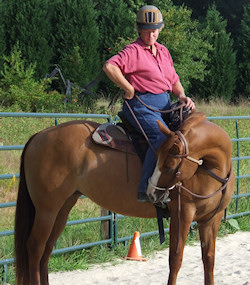
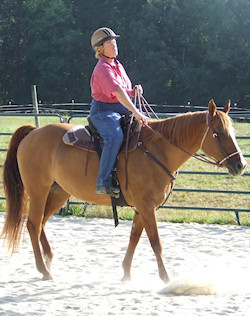
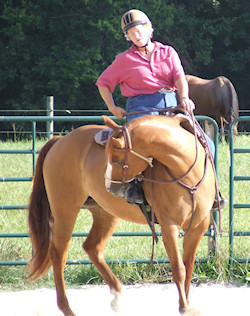
With the preceding two exercises in the bag we can then begin to work on the rail at all three gaits, and also move on to transitions, circles, and serpentines, interspersed with the other exercises discussed below. Mixing things up during these sessions is important: it gives your horse opportunities to catch his breath, and it keeps things interesting for him.

Comparing Figures 2 and 3, you can see that Yield the Hindquarters is a lot like a One-Rein Stop. In Figure 3 I am asking for lateral flexion while keeping my leg on her behind the girth, asking the hips to step over. At first Dixie is a little confused, thinking that I am asking for a stop. To correct her I simply bump gently with my heel, encouraging her to stay in motion. Once she yields several steps, I take away the leg pressure and allow her to come to a stop.
